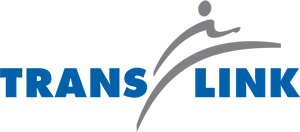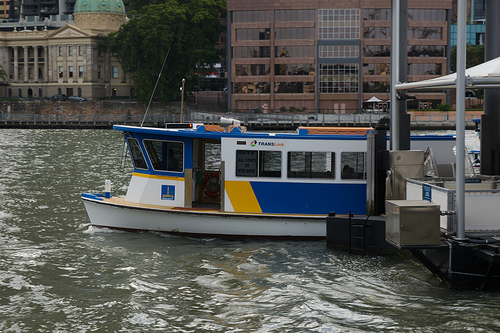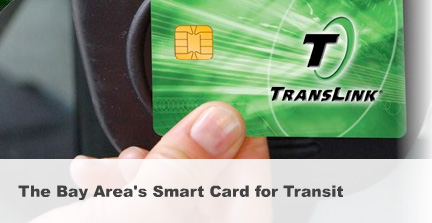Sorry, that’s not us: other TransLinks around the world
Sorry, that’s not us: other TransLinks around the world

Search for TransLink online, and you might find that we’re not the only transit-related TransLink out there.
We have doppelgangers in Australia, Europe, and America who get confused with us from time to time. (Not to worry, it doesn’t happen that often and it’s easily fixed.)
But just who are these other TransLinks, anyway?
TransLink: the San Francisco transit smartcard
Website: www.translink.org
Twitter: twitter.com/sfbaytranslink
This TransLink is a transit smartcard for the San Francisco Bay Area. It’s currently being implemented across five transit agencies serving the region, and is eventually planned for use in all nine Bay Area counties.
As it rolls out, I often hear about this TransLink via Twitter. A lot of people tweet excitedly about their new card, or talk about issues as they start to use it. Some even tweet our @translink account with card questions. More people might just be up on the tweets in that area too, since San Francisco is so tech-savvy.
This TransLink is also quite aware of the other TransLinks. Here’s a tweet from August:
There are several other “TransLink” systems on Twitter, so make sure to address your @ and # tags to SFBayTransLink.
TransLink: transit authority in South East Queensland, Australia
Website: www.translink.com.au
Twitter: www.twitter.com/translinkseq
This TransLink is the public transit authority for South East Queensland, an enormous region in Australia (over 20,000 km, and more than 2 million people!).

TransLink in Australia was created in 2004, and was built to manage the numerous individual transit operators serving South East Queensland. (So I gather from their website and their Wikipedia page.)
Australia’s TransLink has a whopping 23 fare zones in the region, and strangely enough, they offer a Go Card too. The Australian Go Card is a region-wide smartcard, however, while our GoCard is a high-school discount card—but this still makes you read some articles twice, just to be sure they’re not talking about Vancouver.
Translink: public transit authority in Northern Ireland

Website: translink.co.uk
This Translink is the public transit authority for Northern Ireland. Like us, Translink is a brand name they use instead of their longer “real name,” the Northern Ireland Transport Holding Company. (Notice that we use a capital L in TransLink, though!)
They’ve had the name Translink since 1996, and they’re the only one to predate us—TransLink BC launched in 1998.
You can usually easily identify news or blog posts about this Translink, because they tend to talk a lot about train services. Translink in Northern Ireland manages a significant railway service, as well as regional and city bus networks.
So where did our name come from?
We got the name TransLink thanks to Jan Pezarro, our first vice-president of customer service and marketing.
TransLink’s original name was the Greater Vancouver Transportation Authority, which was a bit of a mouthful. So Jan gave us a different brand name. Here’s the story from our history book:
“It wouldn’t be the letters GVTA, because I felt that was much too bureaucratic,” Pezarro said. “We were looking for a name that clearly said ‘more than’ a given operating entity. So the idea came for TransLink, which is transportation and transit, and linking all those aspects across the Lower Mainland.”
Pezarro also wanted the logo to reflect a human focus. “If the philosophy was that this would be a customer-centered entity, we wanted a reminder about what the agency was for,” she said. “And at the heart of that, we wanted to support the quality of life and mobility of the people of the region. Whether those people are customers, whether those people are suppliers of services, whether those people are businesses, we wanted to have something that said, ‘Not equipment, not infrastructure, but people.’”
So, there you have it!








This is obviously a conspiracy to take over the aforementioned cities transportation using a conglomerate that would be overlooked by the general population. Hah! I’ve caught you red-handed!
Seriously though, that is kind of weird to see the word “TransLink” in all those other fonts and logos.
Hey, the Australian Translink ferry even shares our paint colours!
Also close, but not quite the same, is TransLinkeD, (http://www.detroitchamber.com/index.php?option=com_content&view=article&id=73&mid=73) a project of the Detroit Region Chamber.
Which is also not to be confused with TransLinked, a blog about transit, that I happen to contribute to.
Fun roundup! And great to get the origin story on the name here.
if we share the color of translink australian ferry, just hope we don’t gonna share the outdated technology of SanFrancisco Translink smartcard (contact technology) and prefer to it, the RFID contactless technology like used on the Octopuss in Hong Kong and other transit friendly cities…
by the way, it seems to me that the fare validator machine in the Canada line come with RFID (round device on the top) technology, so it seems a good sign
Hmmm, you’re right… the Australian TransLink vehicles seem to have a similar paint scheme to our highway coaches. Here’s a photo from Flickr.
;^) Hmm. Why claim that there are other Translinks, when you can claim a wider area coverage than Toronto or Chicago? ;^P :^D
We also just rolled out a new smartcard system called “Orca” which also combines several regional transit agencies on one card.
Is Translink looking at doing this sometime in the future?
Brian: We are definitely going to be putting out a smartcard. The project is in its initial planning stages at the moment. I’m not certain of the exact timeline for rollout: but we are planning to do this.
Here’s an April 2009 press release with a bit more about the smartcard program too.
[…] Sorry, that’s not us: other TransLinks around the world […]